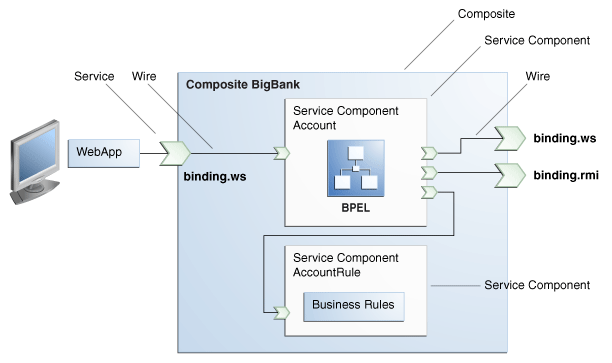Service Component Architecture within SOA Composite Applications
Oracle SOA Suite uses the SCA standard as a way to assemble service components into a SOA composite application. SCA provides a programming model for the following:
-
Creating service components written with a wide range of technologies, including programming languages such as Java, C++, and declarative languages such as XSLT. The use of specific programming languages and technologies (including web services) is not required with SCA.
-
Assembling the service components into a SOA composite application. In the SCA environment, service components are the building blocks of applications.
SCA provides a model for assembling distributed groups of service components into an application, enabling you to describe the details of a service and how services and service components interact. Composites are used to group service components and wires are used to connect service components. SCA helps to remove middleware concerns from the programming code by applying infrastructure declaratively to composites, including security and transactions.
The key benefits of SCA include the following:
-
Loose coupling
Service components integrate with other service components without needing to know how other service components are implemented.
-
Flexibility
Service components can easily be replaced by other service components.
-
Services invocation
Services can be invoked either synchronously or asynchronously.
-
Productivity
Service components are easily integrated to create a SOA composite application.
-
Easy maintenance and debugging
Service components can be easily maintained and debugged when an issue is encountered.
A SOA composite is an assembly of services, service components, and references designed and deployed in a single application. Wiring between the services, service components, and references enables message communication. The details for a composite are stored in the composite.xml file.
Figure 1-1 provides an example of a composite that includes an inbound service binding component, a BPEL process service component (named Account), a business rules service component (named AccountRule), and two outbound reference binding components.
Figure 1-1 Simple SOA Composite Architecture

Description of "Figure 1-1 Simple SOA Composite Architecture"